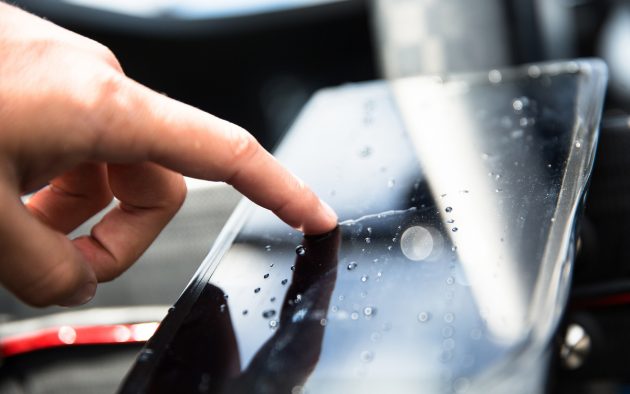How quickly can you read a display? Today’s America’s Cup sailors have to take in more data faster than ever explains Sir Ben Ainslie
One of the most significant developments that foiling has brought to the America’s Cup is speed. The new AC75 is quicker than the old IACC monohulls by a factor of three or four, so the crew must process everything faster and react quicker.
The goal of delivering data in the right format to the right crew members has required a lot of innovation, and it started with the displays. “People process things in different ways, and while numerical formats work for some people, others prefer a bar chart, or more of a graphic format,” said Ben Ainslie.
The requirement for a flexible, programmable display would point towards a tablet or smartphone. However, the 36th America’s Cup has some very strict rules to stop these devices with their onboard accelerometers being used as standalone autopilots. This means that all the motion-sensing components in smartphones and tablets must be disabled.
To avoid this problem, INEOS Team UK developed custom displays with a British company, Papercast. “During the last Cup cycle we started a project to build e-paper screens because they’re naturally daylight visible, and you don’t need a lot of electrical power to make them readable in bright sunlight,” explained Ainslie.
“We had some success with this, and each of the crew has been able to define how their own display looks and the data that is displayed… And that has really paid dividends in the accuracy of the read-outs for those individual sailors.”
The helmsman, tactician, wing trimmer and pilot probably have the greatest problems with data overload. “I’ve got two displays, one tactical and a performance display. The tactical display tells me where we are on the race course, there’s timing information to the boundaries, starting information, plots and so on,” said Ainslie.
Road to the America’s Cup podcast: What can sailing simulators teach us?
The reason is simple: every other means of performance evaluation has been neutered – or, at the very least, significantly…
Road to the America’s Cup podcast episode 1: Imagining the AC75
There is no doubt that the AC75 is a remarkable boat; a monohull designed to fly, engineered to reach speeds…
“Putting boundaries on these courses has changed the match racing game significantly. If the course is reasonably square to the wind, the boundaries make it impossible to get to the layline until the end of the leg, so now we’re thinking about things a bit differently. We’re more interested in how many tacks or gybes it would take to get from one gate mark to each of the others.”
Along with apparent wind data, the boat speed, heading and (ideally) leeway are also required to calculate the wind direction and speed. Traditionally, this data would come from a compass and a paddlewheel or sonic boat speed sensor. INEOS Team UK’s AC75 uses an INS or Inertial Navigation System for these variables, along with a correction for the tide.
“Everyone’s familiar with GPS and what it can do, but the INS is based on a fibreoptic gyroscope, and gives us really accurate, real time position information, with heading, attitude and speed. The heading, pitch and roll data are accurate to a one hundredth of a degree which is quite phenomenal, and we rely pretty heavily on that accuracy. We need fast update rates and accuracy because the boat’s moving so quickly.
“The INS tells us a lot about the accelerations, about the boat’s attitude in flight and how it responds to changes in the flaps and the rudders. We don’t have time to process much of this data whilst we’re actually sailing, but it’s really useful for the design team as we go through and review the data after sailing,” said Ainslie.
“There’s a ridiculous amount of fibreoptics measuring loads all over the boat,” added Ainslie. “We use some of this out on the water, like the mainsheet load, for example. The structural team also keeps a very close eye on those specific sensors where we’re worried the boat could get overloaded.” The era of big data has definitely arrived in the America’s Cup.






